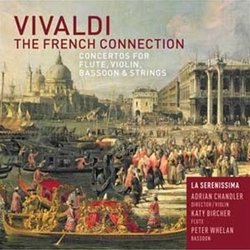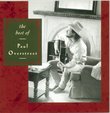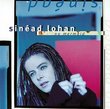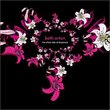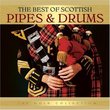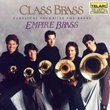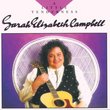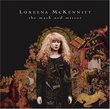| All Artists: Antonio Vivaldi, La Serenissima Title: Vivaldi: The French Connection Members Wishing: 0 Total Copies: 0 Label: Avie Original Release Date: 1/1/2009 Re-Release Date: 9/8/2009 Genre: Classical Styles: Chamber Music, Forms & Genres, Concertos, Historical Periods, Classical (c.1770-1830) Number of Discs: 1 SwapaCD Credits: 1 UPC: 822252217827 |
Search - Antonio Vivaldi, La Serenissima :: Vivaldi: The French Connection
CD DetailsSimilarly Requested CDs
|
CD ReviewsGreat Concert Andrew Judkins | 02/04/2010 (5 out of 5 stars) "The French Connection is the latest in a series of fantastic discs released by Adrian Chandler and La Serenissima. Recently, they've been documenting the development of the concerto in North Italy, which amounted to three CDs of music. For all intents and purposes the concerto, as we know it, was invented in North Italy, and it was Vivaldi who crystallized and popularized the form. Thus, Chandler's main focus has always been the Red Priest.
This new disc is a fantastic collection of a variety of Vivaldi's Concerti. The connecting theme is the French influence. It is sometimes a weak theme---Vivaldi wasn't fluent in French musical style. He took aspects from French music to color his works. Certain works on this CD hardly seem to have any French influence, such as the Violin Concerto in C from opus 4. Others have a clear enough French touch. Perhaps Vivaldi's most profuse French connection was his 'Paris' concerti for strings without soloist. These works were put together for a French patron. In Vivaldi's day, works of this type were deemed desirable as serenade music for the house or garden, much as Mozart's later serenades were to be used. It is more than likely that some of these concerti were simply pulled from Vivaldi's archive of compositions, while some were expressly composed for the commission. His French touches are limited to uneven and dotted rhythms and the use of chicona movements. That said, this is a fantastic recording of a variety of high quality works. Concerti included are: Concerto for strings in C, RV 114. This is Paris concerto #5. It is quite French, with husky dotted and Lomardic rhythms in the first movement. The slow movement is merely a few chord pause in action, while the finale is marked chicona and is an unfolding of playful variations over a bass line. Concerto for Bassoon in F, RV 488. This is one of Vivaldi's many artistically outstanding bassoon concerti. The opening movement features a fugato and a strutting tune starting the first solo based on the fugato theme. Vivaldi has several interesting passages where rapid cascades of notes are accompanied by long notes in the violins to interesting effect. The slow movement starts with a bassoon song accompanied only by continuo. However, the orchestra comes in after the first section with dotted rhythms and returns periodically. The last movement has rustic dotted rhythms marking a French sense of dance. Concerto for Violin in C, RV 185 (op. 4 #7) This concerto has four movements and many old-fashioned features. The opening is a sublime moment of music rather than a simple introduction. The first allegro is a fantastic example of Vivaldi's part-writing skill. The next movement is a largo of great seriousness that steers away from the solo concerto by adding another solo violin. The last movement is a simple dance with a solo cello added to create a Corellian concertino. Concerto for Flute (with bassoon) in G, RV 438. This rustic work was earlier used as a cello concerto to great effect. In this later version the tuttis have been elaborated in addition to the solo being reworked (but not totally reinvented) for flute. The only solo that is totally redone is the slow movement (although the tutti remains the same as the cello version). This is an odd bit of borrowing, because such specialization of the solos would have hardly saved a speed demon like Vivaldi any time in comparison to writing a new work. An excellent flute concerto in all movements. The desolate slow movement stands out. Concerto for strings in G minor, RV 157. This is Paris concerto #1. The opening allegro is in essence another chicona. It is as clever than the C major chicona, despite being shorter, and ends on an angry note. The slow movement is a harmonic web with dotted rhythms, once again. The finale is furious, here treated with perhaps a little too much caution. Concerto fragment for Bassoon in C, RV 468. This work stands fine missing its finale. The modern and comical fast movement seems the perfect opportunity for the bassoon to show its virtues off. The slow movement is more archaic sounding, for only bassoon and continuo. Concerto fragment for Flute in E minor, RV 432. Again, this work should not be ignored because it can stand alone as a single movement. The icy seriousness plays well to the flute's deeper side. Chamber Concerto for Flute Violin Bassoon and Continuo in F, RV 100. This work is very effective and a favorite of mine. It has a great sense of sharing among the instruments and an entertaining rustic feeling that evokes nature at every turn. In the slow movement the bassoon frames and accompanies the flute with a memorable pattern. Just as memorable is the flute's melody. The finale gets a little wild. Concerto for Strings in C minor, RV119. This is Paris concerto #3. This is a work of a mysterious air, with little in the way of French touches. The last movement is a crazy gigue that features a fugato. Concerto for Violin in D, RV 211. This is one of Vivaldi's great violin concerti---ambitious, virtuosic and artistically rich. It opens with a majestic French tune but lets in stomps of the rustic. A great palette of Violin effects occur in the solos. Vivaldi gives pause for 2 cadenzas (this work may have been played in the theater and featured Vivaldi). Adrian Chandler composes cadenzas for these pauses that are quite interesting. The dramatic slow movement is mesmerizing with sicillano touches, while the finale throws all majesty off for a taste of the countryside. This is a fantastic recording of a wide variety of interesting works by Vivaldi, highly recommended." |

